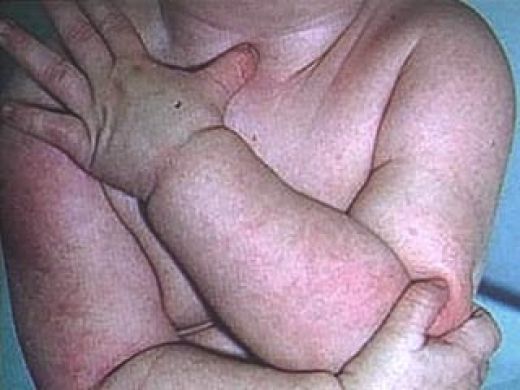It’s annoying and agonizing, painful and uncomfortable - eczema is a nasty skin condition to have at any time. Babies and toddlers infected by it can turn out to be distressed. Plus, it’s very difficult for parents to witness their children suffer. But what is the origin of this horrible condition and how can you identify the symptoms and will it last into adulthood?
Refrain your baby from scratching. She will probably try to find relief in scratching or by rubbing her face next to the sheets while sleeping. But then, scratching and rubbing will promote much irritation and may even inflame her skin and make matters worse. By this, make use of your softest sheets available for her crib as well as keep your baby’s nails short.
Toddler eczema is a little different from eczema in babies. In babies, the rashes are frequently seen on the face and all over the body. For toddlers, the skin among the knees, ankles, and elbows are the ones most infected by eczema. Toddler eczema happens in about 16-20% of children and transpires in children with certain allergic tendencies. Eczema is somehow found to be hereditary which often goes hand in hand with asthma. There will be times that your child’s skin may seem better and at times, get worse. This is a normal cycle of the infection though and not due to bad care.
Sadly, no precise laboratory answer or histologic description identifies atopic dermatitis. Even if eminent contamination levels are established in up to 80 percent of affected patients, contagious levels are also prominent in patients with other atopic syndromes.
Atopic dermatitis has been accounted to influence 10 percent of children. In the United States, it is approximated that more than $354 million per year is spent on the management of infancy atopic dermatitis.While the symptoms of atopic dermatitis decide by youth in 50 percent of affected babies, the condition can continue into maturity. Reduced analytical characteristics comprise of a family history of the condition, premature disseminated juvenile syndrome, female gender and simultaneous allergic rhinitis and asthma.

No comments:
Post a Comment